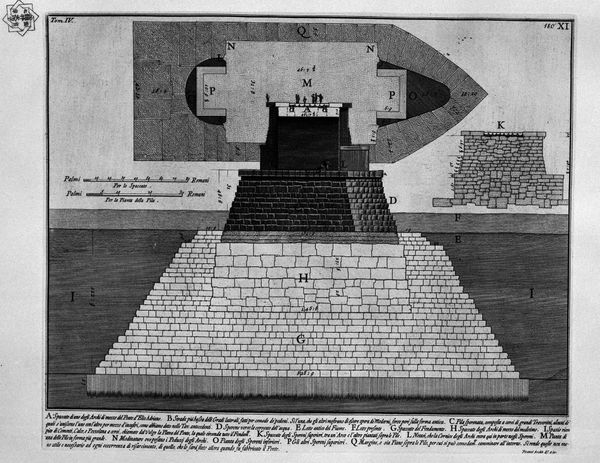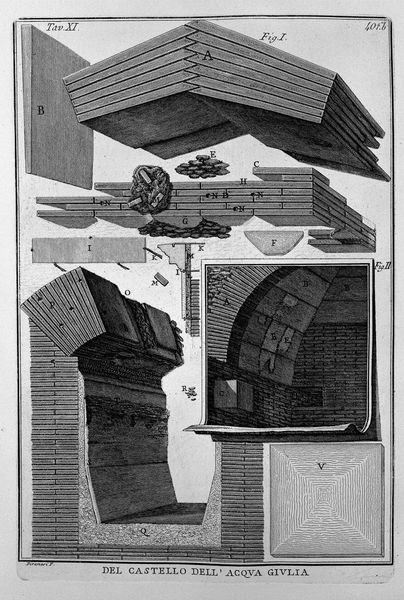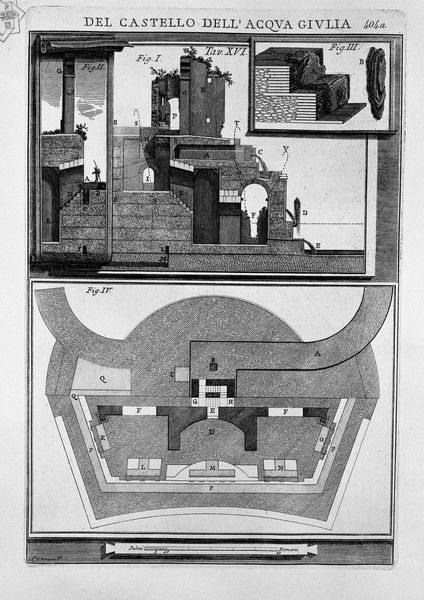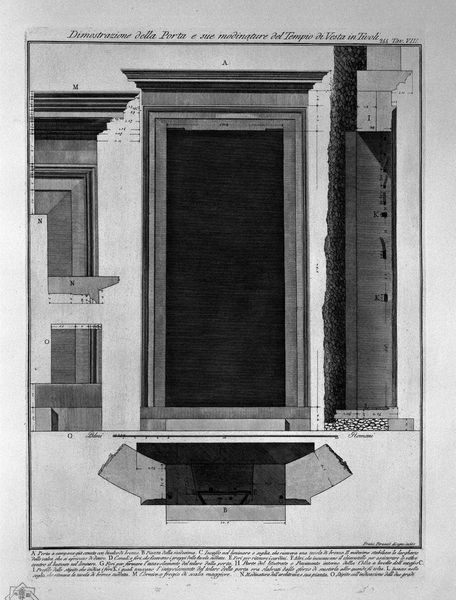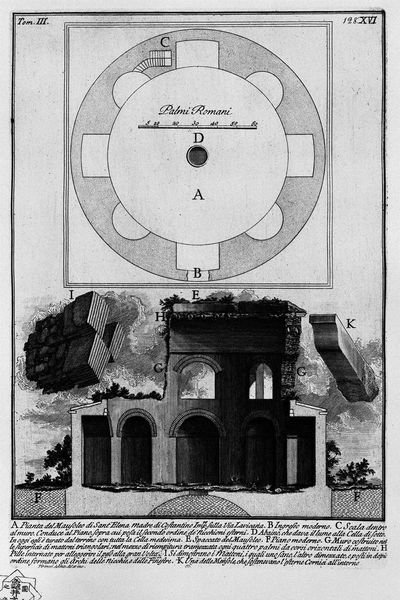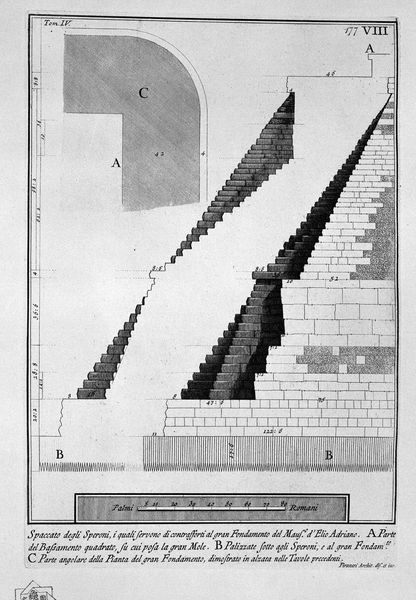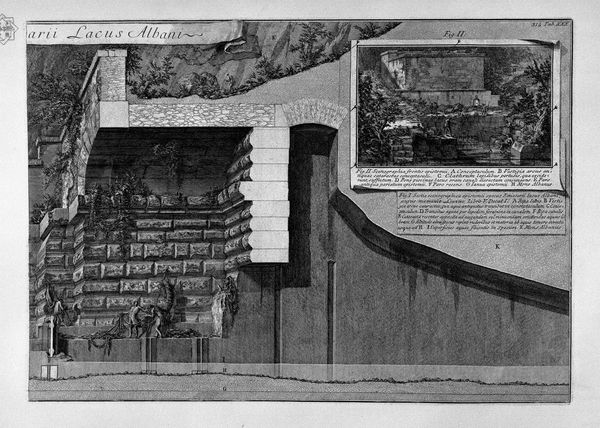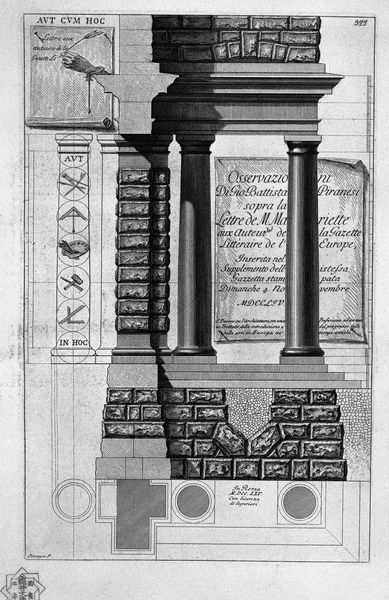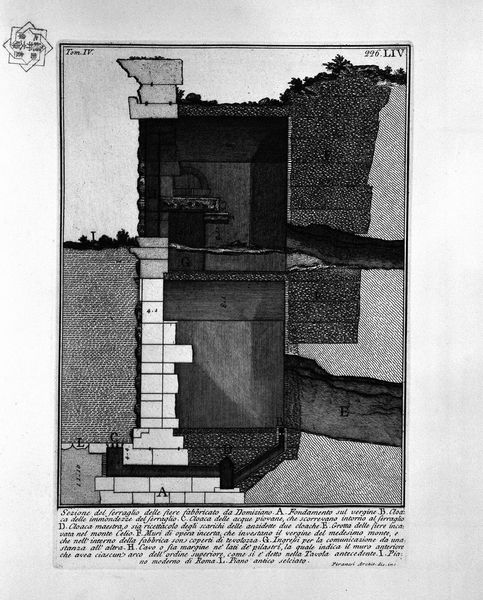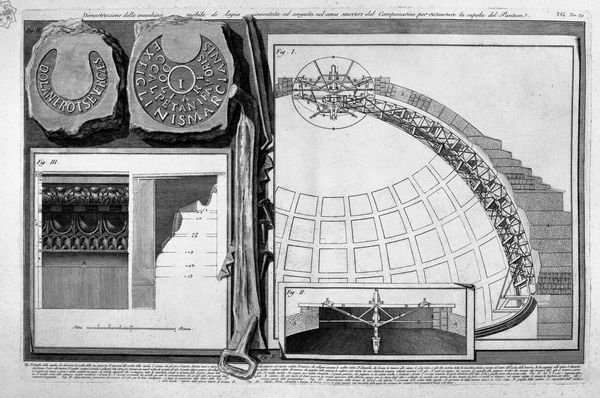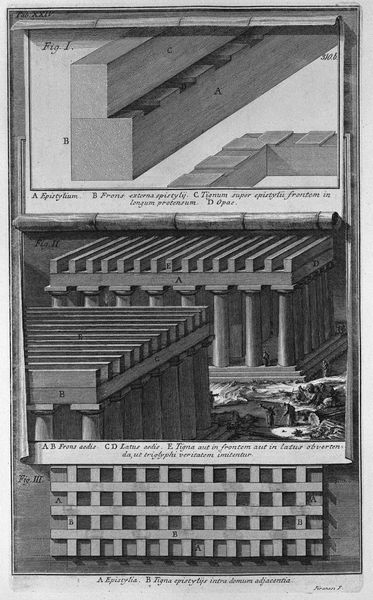
The Roman antiquities, t. 3, Plate XLV. Cross-section of the Pyramid of Caius Cestius.
0:00
0:00
drawing, print, etching, engraving, architecture
#
drawing
# print
#
etching
#
perspective
#
romanesque
#
geometric
#
ancient-mediterranean
#
line
#
history-painting
#
engraving
#
architecture
Copyright: Public domain
Editor: So, this etching is from Giovanni Battista Piranesi's "The Roman Antiquities," and it’s Plate XLV showing a cross-section of the Pyramid of Caius Cestius. It's interesting how Piranesi combines architectural precision with… almost a stage-like presentation. What do you see in this print, especially concerning the pyramid’s construction? Curator: It’s a fascinating object precisely because of that intersection. As a materialist, I see Piranesi foregrounding the labor and materials inherent in constructing both the pyramid itself and its representation. Look at the meticulous detail in the stonework; he is pointing to a process and craft of monumental building and artistic reproduction through engraving. Do you notice how he renders the inscription and dedicatory aspects in the artwork too? Editor: Yes, I see it. It's almost like he’s saying, "Here's the raw documentation, the nuts and bolts," instead of just glorifying the finished monument. He isn't shying away from how things were physically made. Curator: Exactly. He highlights the human endeavor. The etching is itself a product of labor, mirroring the original construction. It prompts us to consider who made it, how were the stones quarried, transported, and erected, and how labor and consumption are at the heart of monumental artistic creation. Are we looking at high art or an industrial project? Editor: That’s really interesting, this connection between physical creation and artistic depiction. The scale almost feels like it’s celebrating industry rather than something spiritual, like you are observing that the tools and material are becoming just as much a part of it as anything else. Curator: And what of the paper? Or ink? It's all part of a continuous chain of production and consumption, right down to the person acquiring this print to examine this intersection between ancient Roman engineering and early modern printing. Editor: Right. Thinking about the materials and the labor behind it really opens up the artwork. Curator: Exactly. It shifts our perspective from just admiring the object to understanding the entire system of its creation and dissemination.
Comments
No comments
Be the first to comment and join the conversation on the ultimate creative platform.
